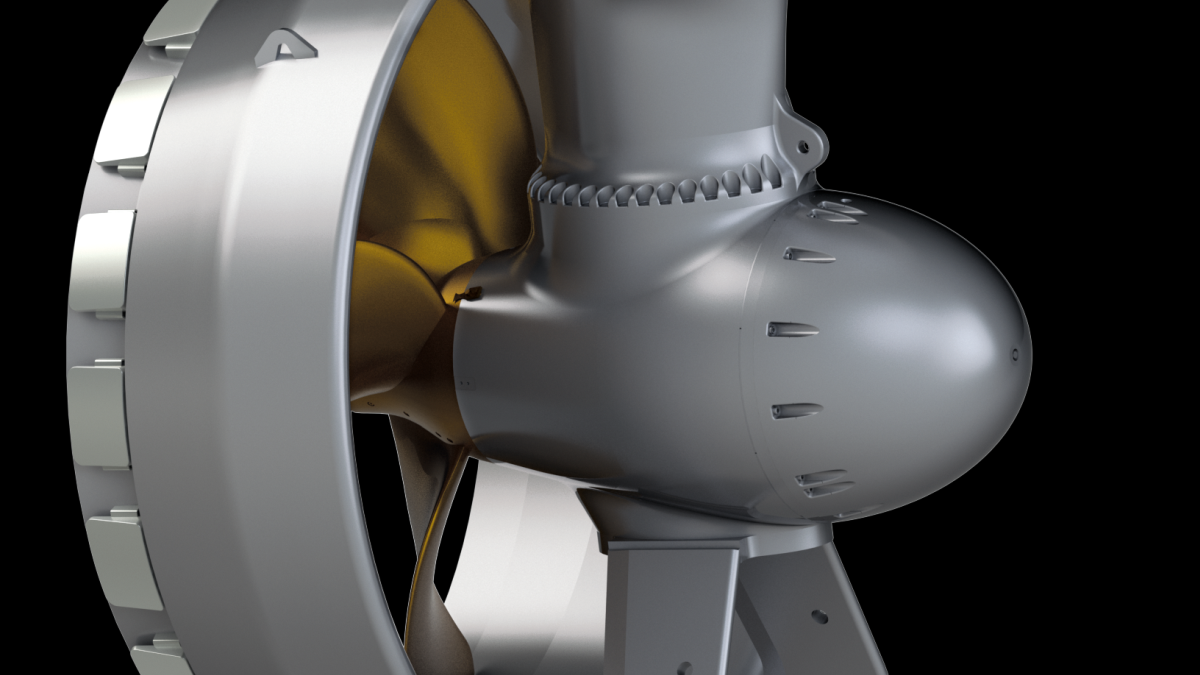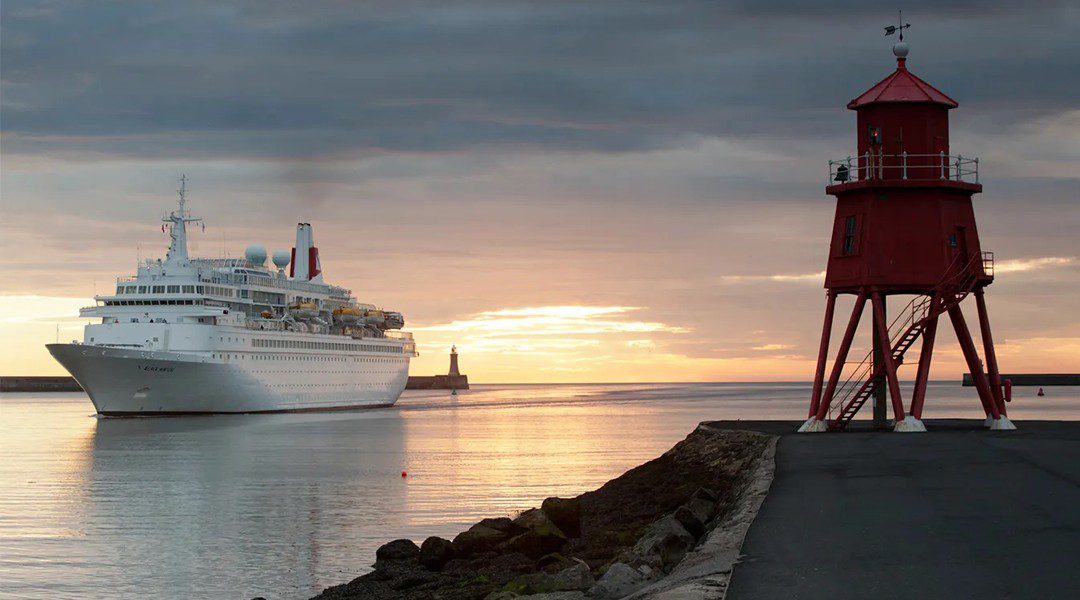 Schottel’s SRP-D dynamic rudderpropeller has faster steering and lower overall power input (source: Schottel)
Schottel’s SRP-D dynamic rudderpropeller has faster steering and lower overall power input (source: Schottel)
Newbuild vessels to support deepwater oil, gas and renewable energy will have thrusters with faster responses and lower power requirements
Manufacturers of thrusters installed on offshore support vessels for the oil, gas and renewable energy sectors have introduced new ranges for electric-powered propulsion and faster responses during dynamic positioning (DP). Much of the latest developments are focused on installation on commissioning, service operation vessels (CSOVs) being built for the next generation of offshore windfarms in deeper waters and more remote from shore.
Schottel is working to deliver several of its new dynamic rudderpropeller (SRP-D) thrusters for two series of CSOVs under construction, one fleet by Damen Shipyards for Windcat Offshore, and the other by VARD Group for Edda Wind.
Schottel sales director for tug and offshore energy Christian Heidrich said SRP-D was an improvement on proven thruster design, with faster steering during transits and reactions for safe vessel DP. “SRP-D is a gamechanger for offshore vessel operations,” he said during a webinar on 24 April. “It has been demonstrated to save power and fuel consumption.”
DNV modelled and studied Schottel’s SRP-D and vessel positioning and power consumption in multiple sea and wind states, which “showed less total power was consumed over time with SRP-D versus standard SRPs,” said Mr Heidrich.
Fast responses for stable station keeping in various weather and sea conditions would require brief peaks in electrical power, which Mr Heidrich thought would come from onboard batteries.
Dynamic SRPs would help maintain safe positioning, even when there is failure of one thruster. Schottel worked with Navis Engineering to ensure a DP system would react swiftly to minimise heading deviations and positioning issues. “It would be the difference between a scary moment on the gangway and an incident with casualties – so there are safety benefits,” said Mr Heidrich.
“It would be the difference between a scary moment on the gangway and an incident with casualties”
Schottel also studied different tilts to underwater gearboxes and nozzled propellers to optimise performance and minimise thruster-hull and thruster-thruster interactions. It found a gearbox inclination of 8 degrees would redirect propeller wash downwards and improve performance. However, tilted nozzles would result in increased cavitation, noise and vibration. “The tilted gearbox is superior to a tilted nozzle,” said Christian Heidrich.
Schottel will provide a full propulsion package to VARD for CSOVs it is building for Edda Wind. Each vessel will have two SRP 460 Ds, each with an input power of 2,000 kW and a propeller diameter of 2,600 mm, one retractable rudderpropeller of type SRP 380 R (1,500 kW, 2,200 mm propeller diameter), and two transverse thrusters of type STT 5 (1,400 kW, 2,500 mm propeller diameter). Each SRP-D’s propeller shaft has an 8-degree tilt, reduced propeller /deceleration times and a high-speed azimuth steering system with reinforced gear components, which achieves double the rotational speed.
Schottel propulsion packages will also be installed on Windcat’s Elevation series CSOVs, with each 87-m vessel having four SRP 430 D dynamic thrusters (1,780 kW, 2,500 mm propeller diameter) arranged in Damen’s DPX-Drive configuration at the bow and stern, starboard and port side. No other type of thruster is required in this layout. Mr Heidrich said first deliveries were scheduled May 2025.
Windcat managing director Willem van der Wel said these 89-m CSOVs will have a beam of 20 m and a draught of 5.3 m, and diesel-electric propulsion, using hydrogen dual-fuel generators and a large battery pack for peak power shaving. “SRP 430 D are angled at 98 degrees for reduced thruster-hull interference, optimised DP and reduced energy demand, and high-speed steering that reduces power to position vessels,” said Mr van der Wel. Research academy Marin modelled the symmetrical hull and thruster set up to verify it would reduce fuel consumption, installed power requirements and vessel motions.
Voith Turbo Marine has developed an electric version of its Voith Schneider Propeller (eVSP) for offshore vessels, providing emissions-free towage and ship manoeuvring.
It has a powerful permanent-magnet electric motor to convert electrical drive power into thrust with virtually no losses, delivering high torque and fast response without a gearbox.
Voith Turbo Marine vice president of research and development Dirk Jürgens said this robust electric propeller reduces maintenance requirements, cutting costs for servicing and lubricant oil, improving its ecological footprint while decreasing operating expenditure.
“Demand for eco-friendly propulsion systems is continuously increasing,” he said. “In this context, we are also registering growing demand for the eVSP, which is ideally suited for use in tugs and various offshore and special ships’ applications.”
Voith Turbo Marine vice president for engineering Jörg Maier said the price of high-performance batteries and power electronics components has fallen rapidly in recent years enabling more applications of electric propulsion, especially if there is limited space for drives and motors.





